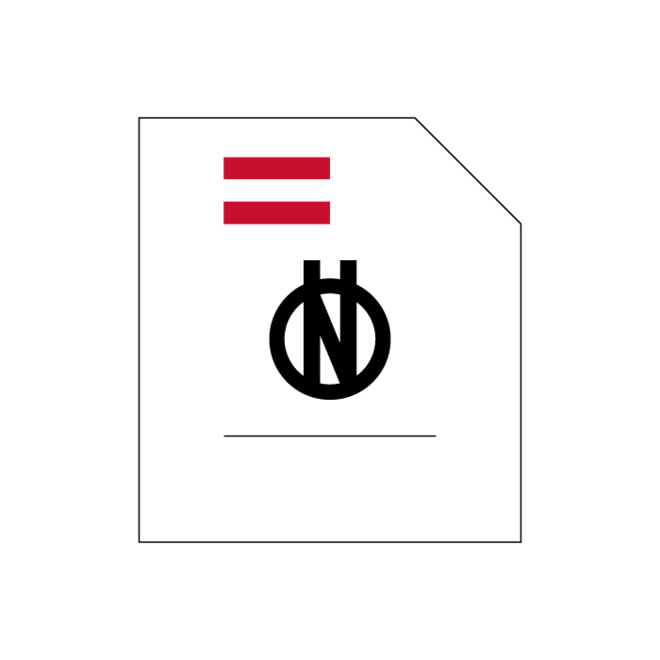Jetzt auswählen und bestellen
109,76 €
exkl. USt.
Konfigurieren
Norm
ÖNORM EN ISO 22017
Ausgabedatum: 2021 03 15
Water quality - Guidance for rapid radioactivity measurements in nuclear or radiological emergency situation (ISO 22017:2020)
This document provides guidelines for testing laboratories wanting to use rapid test methods on
water samples that may be contaminated following a nuclear or radiologica...
Weiterlesen
Gültig
Herausgeber:
Austrian Standards International
Format:
Digital | 30 Seiten
Sprache:
Englisch
Standards mitgestalten:
This document provides guidelines for testing laboratories wanting to use rapid test methods on
water samples that may be contaminated following a nuclear or radiological emergency incident. In an
emergency situation, consideration should be given to:
— taking into account the specific context for the tests to be performed, e.g. a potentially high level of
contamination;
— using or adjusting, when possible, radioactivity test methods implemented during routine situations
to obtain a result rapidly or, for tests not performed routinely, applying specific rapid test methods
previously validated by the laboratory, e.g. for 89Sr determination;
— preparing the test laboratory to measure a large number of potentially contaminated samples.
The aim of this document is to ensure decision makers have reliable results needed to take actions
quickly and minimize the radiation dose to the public.
Measurements are performed in order to minimize the risk to the public by checking the quality of water
supplies. For emergency situations, test results are often compared to operational intervention levels.
A key element of rapid analysis can be the use of routine methods but with a reduced turnaround time.
The goal of these rapid measurements is often to check for unusual radioactivity levels in the test sample,
to identify the radionuclides present and their activity concentration levels and to establish compliance
of the water with intervention levels. It should be noted that in such circumstances, validation
parameters evaluated for routine use (e.g. reproducibility, precision, etc.) may not be applicable to the
modified rapid method. However, due to the circumstances arising after an emergency, the modified
method may still be fit-for-purpose although uncertainties associated with the test results need to be
evaluated and may increase from routine analyses.
The first steps of the analytical approach are usually screening methods based on gross alpha and
gross beta test methods (adaptation of ISO 10704 and ISO 11704) and gamma spectrometry (adaptation
of ISO 20042, ISO 10703 and ISO 19581). Then, if required, test method standards for specific
radionuclides are adapted and applied (for example, 90Sr measurement according to
ISO 13160) as proposed in Annex A.
This document refers to published ISO documents. When appropriate, this document also refers to
national standards or other publicly available documents.
Screening techniques that can be carried out directly in the field are not part of this document.
ÖNORM EN ISO 22017
2021 03 15
Water quality - Guidance for rapid radioactivity measurements in nuclear or radiological emergency s...
Norm
↖
Norm
ISO 9696:2017
Ausgabedatum :
2017 09 26
Water quality — Gross alpha activity — Test method using thick source
Norm
ISO 9697:2018
Ausgabedatum :
2018 11 02
Water quality — Gross beta activity — Test method using thick source
Norm
ISO 9698:2019
Ausgabedatum :
2019 04 30
Water quality — Tritium — Test method using liquid scintillation counting
Norm
ISO 10703:2021
Ausgabedatum :
2021 06 24
Water quality — Gamma-ray emitting radionuclides — Test method using high resolution gamma-ray spectrometry
Norm
ISO 10704:2019
Ausgabedatum :
2019 02 19
Water quality — Gross alpha and gross beta activity — Test method using thin source deposit
Norm
ISO 11704:2018
Ausgabedatum :
2018 11 06
Water quality — Gross alpha and gross beta activity — Test method using liquid scintillation counting
Norm
ISO/IEC 17025:2017
Ausgabedatum :
2017 11 29
General requirements for the competence of testing and calibration laboratories (Corrected version 2017-11)
Norm
ISO 13160:2021
Ausgabedatum :
2021 07 14
Water quality — Strontium 90 and strontium 89 — Test methods using liquid scintillation counting or proportional counting
Norm
ISO 13161:2020
Ausgabedatum :
2020 07 31
Water quality — Polonium 210 — Test method using alpha spectrometry
Norm
ISO 13162:2021
Ausgabedatum :
2021 06 04
Water quality — Carbon 14 — Test method using liquid scintillation counting
Norm
ISO 13163:2021
Ausgabedatum :
2021 07 09
Water quality — Lead-210 — Test method using liquid scintillation counting
Norm
ISO 13165-1:2013
Ausgabedatum :
2013 04 10
Water quality — Radium-226 — Part 1: Test method using liquid scintillation counting
Norm
ISO 13165-2:2014
Ausgabedatum :
2014 04 17
Water quality — Radium-226 — Part 2: Test method using emanometry
Norm
ISO 13165-3:2016
Ausgabedatum :
2016 03 08
Water quality — Radium-226 — Part 3: Test method using coprecipitation and gamma-spectrometry
Norm
ISO 13166:2020
Ausgabedatum :
2020 08 04
Water quality — Uranium isotopes — Test method using alpha-spectrometry
Norm
ISO 13167:2015
Ausgabedatum :
2015 12 04
Water quality — Plutonium, americium, curium and neptunium — Test method using alpha spectrometry
Norm
ISO 13168:2015
Ausgabedatum :
2015 06 29
Water quality — Simultaneous determination of tritium and carbon 14 activities — Test method using liquid scintillation counting (Corrected version 2016-08)
Norm
ISO 17294-2:2016
Ausgabedatum :
2016 07 04
Water quality — Application of inductively coupled plasma mass spectrometry (ICP-MS) — Part 2: Determination of selected elements including uranium isotopes
Norm
ISO 19581:2017
Ausgabedatum :
2017 10 09
Measurement of radioactivity — Gamma emitting radionuclides — Rapid screening method using scintillation detector gamma-ray spectrometry
Norm
ISO 20042:2019
Ausgabedatum :
2019 06 04
Measurement of radioactivity — Gamma-ray emitting radionuclides — Generic test method using gamma-ray spectrometry
Norm
ISO 22017:2020
Ausgabedatum :
2020 08 28
Water quality — Guidance for rapid radioactivity measurements in nuclear or radiological emergency situation


